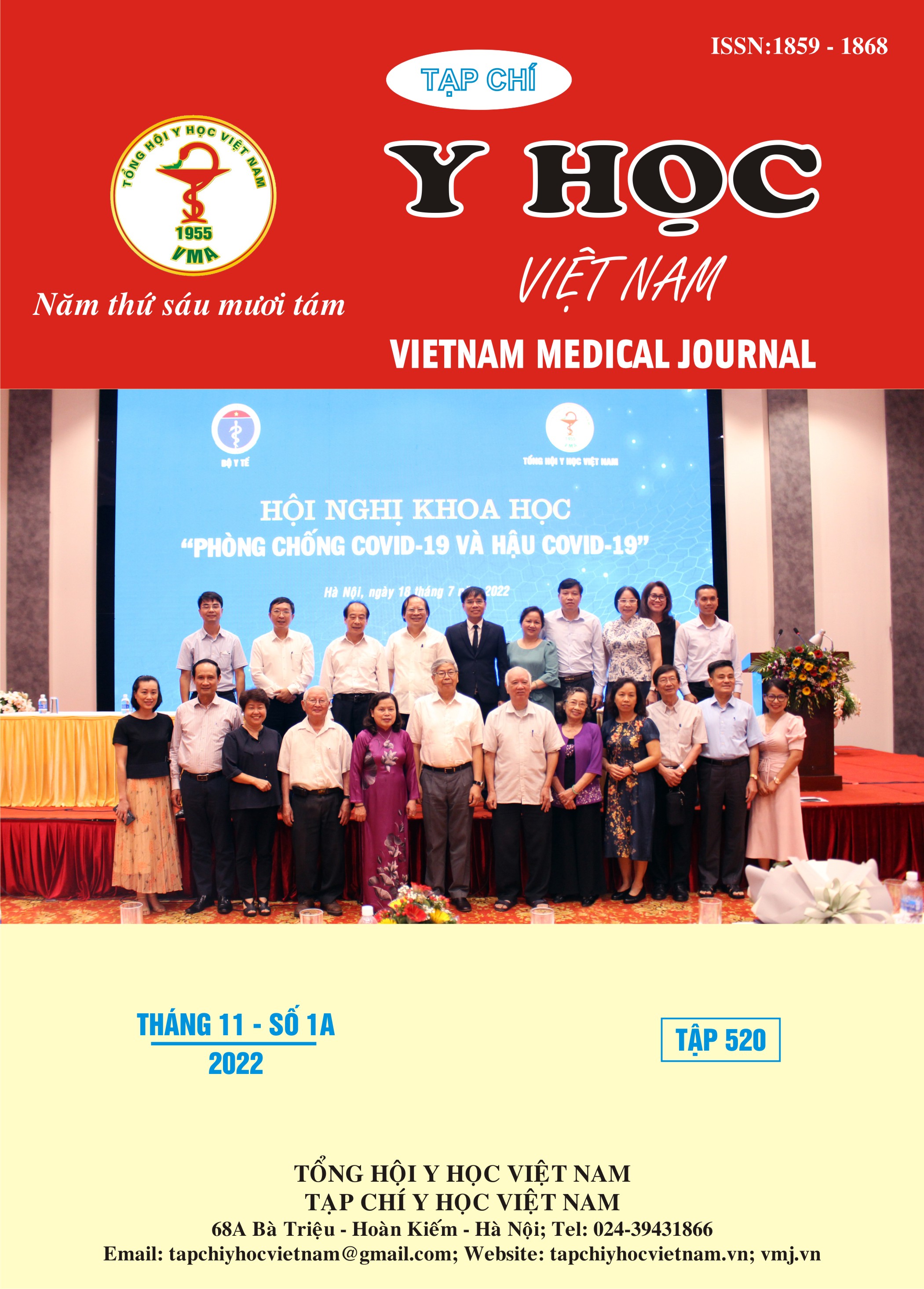BARRIERS TO GLYCEMIC SALF-CONTROL AND THEIR RELATIONSHIPS WITH RESULTS OF GLYCEMIC CONTROL IN PATIENTS WITH TYPE 2 DIABETES AT THE NATIONAL HOSPITAL OF OF ENDOCRINOLOGY
Main Article Content
Abstract
Objectives: To evaluate the relationships between barriers to glycemic seltf-control and their relationships with results of glycemic control in patients with type 2 diabetes at the National Hospital of Endocrinology from July 2021 to June 2022. Methods: A cross-sectional study was implemented in 391 patient with type 2 diabetes.Barriers to glycemic self-control were assessed with a Survey Questionnaire and glycemic control was assessed by HbA1c and fasting plasma glucose. Results: The rate of good glycaemic control was 39.1%. Patients had higher self-control activity scores in the group that achieved the glycemic goal compared with the group that did not, p<0.05. Rates of achieved glycemic control are lower in the patients with barriers due to impaired or loss of appetite/taste, other medical conditions, barriers to knowing names of drugs, time to take them, their side effects, exercise duration needed, how to monitor blood glucose at home, good foods, how to manage low blood sugar; barriers to participation in education, understanding content of the consultation, reading documents/brochures; barriers to getting supports in taking medication, reminding to take medication, exercise; barriers to glucose meter; The difference was statistically significant with p<0.05. Conclusion: Barriers to glycemic self-control were associated to low rate of achieved blood glucose control.
Article Details
Keywords
type 2 diabetes, self-control barriers
References
2. Bộ Y Tế (2020), Hướng dẫn chẩn đoán và điều trị Đái tháo đường tip 2, Số 5481/QĐ-BYT.
3. Ahmad N.S., Islahudin F., Paraidathathu T. (2014). Factors associated with good glycemic control among patients with type 2 diabetes mellitus. Journal of diabetes investigation, 5(5), 563-569.
4. Hứa Thành Nhân, Nguyễn Thy Khuê (2014). Tỷ lệ bệnh nhân đái tháo đường týp 2 đạt mục tiêu HbA1c tại một phòng khám chuyên khoa đái tháo đường ở TP Hồ Chí Minh. Tạp chí "Nội tiết và Đái tháo đường", 13, 35-40.
5. Nelson L.A., Wallston K.A., Kripalani S. et al (2018). Assessing barriers to diabetes medication adherence using the Information-Motivation-Behavioral skills model. Diabetes Res Clin Pract, 142, 374-384.
6. Pokhrel S., Shrestha S., Timilsina A. et al (2019). Self-Care Adherence And Barriers To Good Glycaemic Control In Nepalese Type 2 Diabetes Mellitus Patients: A Hospital-Based Cross-Sectional Study. J Multidiscip Healthc, 12, 817-826.
7. Davies M.J., D'Alessio D.A., Fradkin J. et al (2018). Management of Hyperglycemia in Type 2 Diabetes, 2018. A Consensus Report by the American Diabetes Association (ADA) and the European Association for the Study of Diabetes (EASD). Diabetes Care, 41(12), 2669-2701.
8. Tomky D., Tomky D., Cypress M. et al (2008). Aade Position Statement. The Diabetes Educator, 34(3), 445-449.


